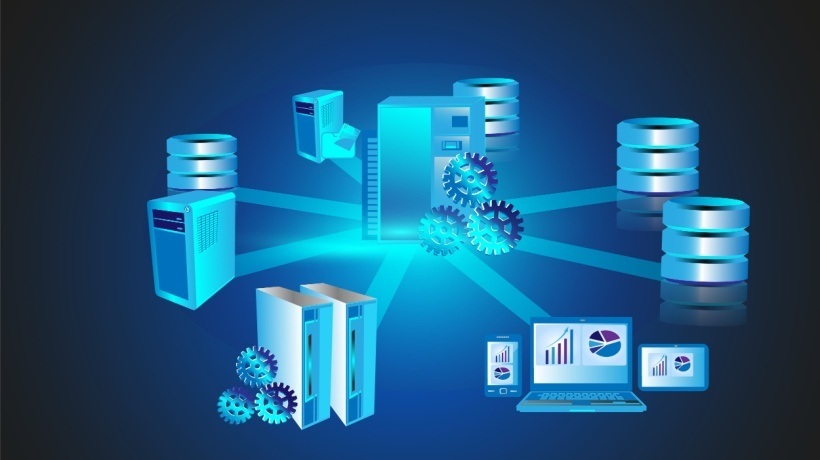Modernizing Legacy Systems In The eLearning Industry
The eLearning industry is at the forefront of educational innovation in today’s fast-paced digital world. However, many institutions and organizations still rely on outdated legacy systems, which can hinder growth, efficiency, and the ability to provide high-quality learning experiences. Modernizing these legacy systems is crucial for staying competitive and meeting the evolving needs of learners and educators alike. In this article, we’ll explore the importance of legacy system modernization in the eLearning industry, key strategies for implementation, and the role of no-code and low-code technologies in this transformative journey.
The Importance Of Modernizing Legacy Systems
Legacy systems, often built decades ago, are typically monolithic, difficult to maintain, and incompatible with modern technologies. These systems can pose several challenges to eLearning providers:
- Limited scalability
Legacy systems struggle to handle the growing number of users and the increasing volume of data in the digital learning environment. - Security risks
Outdated systems are more vulnerable to cyber threats, putting sensitive data at risk. - Poor User Experience
Modern learners expect intuitive, responsive, and interactive platforms, which legacy systems fail to deliver. - High maintenance costs
Maintaining and updating legacy systems requires specialized skills and significant financial resources. - Incompatibility with new technologies
Integrating advanced features like Artificial Intelligence (AI), Machine Learning (ML), and analytics is challenging with outdated infrastructure.
To overcome these obstacles, eLearning providers must embark on a journey to modernize their legacy systems.
Strategies For Legacy System Modernization
Modernizing legacy systems is a complex process that requires careful planning and execution. Here are some effective strategies to consider:
1. Assessment And Planning
The first step in modernization is to conduct a thorough assessment of the existing systems. Identify the strengths, weaknesses, and areas that require improvement. This assessment should involve stakeholders from various departments to ensure a comprehensive understanding of the system’s impact on different aspects of the organization.
2. Phased Approach
Rather than a complete overhaul, consider a phased approach to modernization. This allows for gradual improvements without disrupting ongoing operations. Prioritize critical areas that need immediate attention and gradually transition to modern solutions.
3. Cloud Migration
Migrating to the cloud is a fundamental aspect of modernizing legacy systems. Cloud-based solutions offer scalability, flexibility, and cost-efficiency. They also enable seamless integration with other modern technologies, enhancing the overall eLearning experience.
4. Microservices Architecture
Adopting a microservices architecture can significantly improve the agility and maintainability of the system. Breaking down the monolithic structure into smaller, independent services allows for easier updates, faster deployment, and better resource management.
5. Embracing No-Code And Low-Code Technologies
No-code and low-code platforms are revolutionizing the way eLearning systems are developed and maintained. These technologies empower organizations to build, customize, and deploy applications with minimal coding, reducing dependency on specialized IT skills and accelerating the modernization process.
The Role Of No-Code And Low-Code Technologies
No-code and low-code platforms offer several advantages in the context of legacy system modernization:
1. Rapid Development
With intuitive drag-and-drop interfaces, no-code and low-code platforms enable rapid application development. This allows eLearning providers to quickly create and deploy new features, enhancing the learning experience without the lengthy development cycles associated with traditional coding.
2. Cost-Effectiveness
By reducing the need for extensive coding and specialized developers, no-code and low-code platforms lower development costs. Organizations can allocate resources more efficiently, focusing on innovation and growth rather than maintenance.
3. Empowering Educators And Administrators
No-code and low-code technologies democratize the development process. Educators and administrators, who may not have technical backgrounds, can easily create and manage digital learning tools, fostering a more collaborative and responsive approach to system enhancement.
4. Seamless Integration
Modern no-code and low-code platforms are designed to integrate seamlessly with existing systems and third-party applications. This interoperability ensures that legacy systems can be incrementally modernized without disrupting the overall ecosystem.
5. Enhanced Customization
These platforms provide extensive customization options, allowing organizations to tailor their eLearning systems to specific needs and preferences. This flexibility ensures that the system evolves in line with changing educational trends and user expectations.
Conclusion
The modernization of legacy systems in the eLearning industry is not just a technical upgrade; it’s a strategic imperative for staying relevant and competitive in a dynamic educational landscape. By leveraging advanced strategies and embracing no-code and low-code technologies, eLearning providers can overcome the limitations of outdated systems, enhance User Experiences, and pave the way for innovative and scalable learning solutions. Modernization is a journey, and every step taken toward updating and optimizing legacy systems brings the eLearning industry closer to a future where technology and education seamlessly converge to empower learners and educators worldwide.










